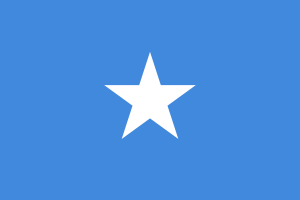Language/Somali/Culture/Somali-History
| ◀️ Geography of Somalia — Previous Lesson | Next Lesson — Common Adverbs ▶️ |
Introduction
In this lesson, we will explore the rich history of Somalia, and how it has influenced and shaped the culture and society we see today. From ancient kingdoms and empires to modern-day struggles, Somalia has a complex and fascinating history that is worth delving into. Whether you are interested in learning more about Somalia for personal or professional reasons, understanding its history is essential. By the end of this lesson, you will have a good grasp of the key events and people that have contributed to the making of Somali history.
Prehistory and Early History
Somalia has a long and varied history, stretching back to prehistoric times. Archaeological evidence suggests that the region was inhabited as early as the Paleolithic era, around 30,000 years ago. Over the centuries, Somalia was at the crossroads of many ancient trade routes, connecting Africa, the Middle East, and Asia.
One of the earliest and most famous Somali kingdoms was the Kingdom of Punt, which thrived in the Horn of Africa during the Bronze Age. Punt was a major center for trade and commerce, and it is thought to have had close ties with ancient Egypt, with evidence of trade between the two kingdoms dating back thousands of years.
Somalia was also a key player in the trade of frankincense and myrrh, highly prized commodities in the ancient world. The kingdom of Axum, which later became Ethiopia, was a major importer of frankincense from Somalia, and this trade helped to build the wealth and power of the Somali kingdoms.
Islamic Influence
In the 7th century, Islam began to spread across the Arabian Peninsula, and soon reached the coast of Somalia. By the 10th century, many of the coastal cities, such as Mogadishu, were centers of Islamic learning and commerce. This period of Islamic influence brought about significant changes to Somali society and culture, including the adoption of the Arabic script and language.
One of the most famous Somali leaders during this period was Ahmad ibn Ibrahim al-Ghazi, who led a military campaign against the Ethiopian kingdom of Abyssinia in the 16th century. Al-Ghazi's success in battle earned him the title of Imam, and his legacy is still celebrated today as a symbol of Somali resistance to foreign influence.
Colonialism and Independence
In the late 19th century, Somalia became a target of European colonialism, with Britain, Italy, and France all vying for control of the region. The colonial period was marked by violence and exploitation, as the Somalis struggled to maintain their independence and sovereignty.
During World War II, Somalia became an important strategic location, and both the British and Italian forces used the region as a base of operations. After the war, Somalia gained independence from Italy in 1960, and from Britain a few months later. Many Somalis hoped that independence would bring about a new era of peace and prosperity, but instead, the country was plunged into decades of political instability, conflict, and civil war, which still continues to this day.
Modern-Day Somalia
Today, Somalia is a country with a rich cultural heritage and a vibrant and diverse society. Despite the challenges and hardships that the country has faced, the Somalis have managed to maintain a strong sense of national identity and pride. From traditional music and dance to Somali cuisine and fashion, the culture of Somalia is as varied and dynamic as its history.
Somalia is also home to some of the world's most resilient and innovative people, who have found ways to thrive in even the most difficult circumstances. From entrepreneurs and artists to humanitarians and educators, Somalis are making a difference both at home and around the world.
If you are interested in learning more about Somali history and culture, there are many great resources available online and in print. Some recommended books include "Warriors Don't Cry" by Melba Pattillo Beals, "The Invisible War" by Hargeisa Press, and "The Pirates of Somalia" by Jay Bahadur.
Conclusion
Somali history is a fascinating and complex subject, full of rich stories and experiences that have shaped the culture and society of this proud nation. Whether you are learning Somali for personal or professional reasons, understanding its history is essential for gaining a deeper appreciation of the country and its people. By exploring the key events and people that have contributed to the making of Somali history, you will gain a better understanding of the challenges and opportunities that the country faces today.
Videos
Ancient Somali History (Waaq) - YouTube
World Citizen: Toronto's Somali Community - YouTube
Learning Somali Culture Through Traditional Dance - YouTube
Arts and Culture Academy opens in the Somalia's capital ...
Young, British and Somali at Cambridge University - YouTube
Other Lessons
- Greetings and Etiquette
- Geography of Somalia
- Holidays and Celebrations
- Somali Art
- Somalia Timeline
- Somali Music
- Somali Literature
Sources
- Somali - EthnoMed
- Somali Culture - Core Concepts — Cultural Atlas
- Culture of Somalia - history, people, women, beliefs, food, customs ...
| ◀️ Geography of Somalia — Previous Lesson | Next Lesson — Common Adverbs ▶️ |

